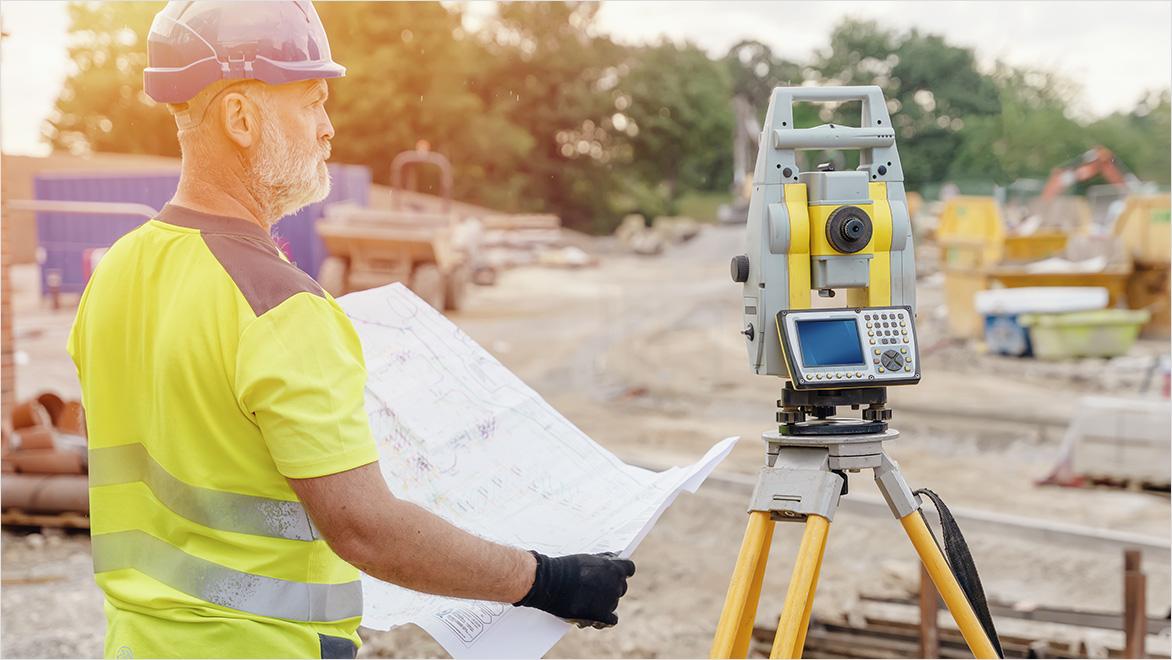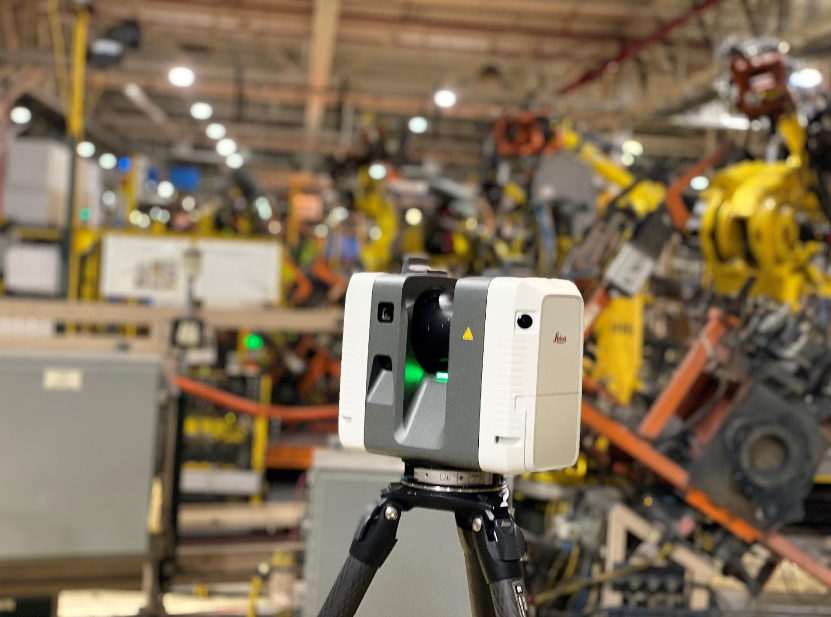The Future of Accuracy Measurement: Comprehending the Role of 3D Laser Scanning Modern Technology
The landscape of precision dimension is advancing with the development of 3D laser scanning modern technology. This technology assures improved precision and efficiency throughout various fields. As markets begin to welcome these improvements, the effects for task monitoring and execution come to be increasingly considerable. The transformative results of this technology extend past mere numbers and measurements, hinting at a wider change in how specialists approach their work. What might this suggest for the future?
What Is 3D Laser Scanning Innovation?
3D laser scanning modern technology is an innovative technique utilized to catch specific three-dimensional dimensions of physical things and environments. This modern technology uses laser beam of lights to gather information factors, which are after that processed to create comprehensive electronic representations of the scanned topics. By emitting countless laser pulses per secondly, 3D laser scanners can accurately tape the shape, size, and spatial connections of various surface areas.
The procedure generally includes positioning the scanner at different viewpoint to capture substantial data. The resulting factor cloud, a collection of countless information points, can be evaluated and exchanged 3D versions. Applications of this technology span several fields, including heritage, engineering, and design preservation, where it helps in paperwork and analysis. As a non-intrusive method, 3D laser scanning decreases disruption to the environment, allowing for detailed analyses of both existing structures and natural landscapes, thereby improving understanding and helping with educated decision-making.
Key Advantages of 3D Laser Scanning in Different Industries
3D laser scanning innovation uses significant advantages across various industries by supplying improved accuracy and precision in measurements. This modern technology not only improves process but also leads to substantial time and price savings. As organizations increasingly adopt this cutting-edge technique, the advantages become obvious in improved job outcomes and effectiveness.
Boosted Accuracy and Precision
The combination of laser scanning modern technology has changed the method sectors approach measurement and information collection. This technology supplies an unprecedented degree of precision, capturing countless information points in a single check. Because of this, experts throughout various fields, such as engineering, design, and production, can create highly outlined 3D versions that reflect real-world conditions. Enhanced precision reduces errors connected with typical measurement techniques, making certain that buildings and styles are based on precise data. Furthermore, the capacity to catch intricate information permits far better evaluation and decision-making, eventually bring about boosted end results. By leveraging 3D laser scanning, sectors can attain greater criteria of top quality, making it an important tool for accurate measurements.
Time and Price Efficiency
Performance in time and price is a considerable advantage provided by laser scanning technology, transforming task implementation across various industries. By swiftly recording in-depth 3D data, laser scanning reduces the moment invested in hands-on dimensions and reduces the risk of mistakes. This quick data procurement facilitates much faster decision-making and job timelines, enabling groups to designate resources better. In addition, the modern technology reduces the demand for rework, as exact designs lead to far better planning and implementation. Industries such as building and construction, design, and manufacturing advantage substantially, seeing reduced expenses connected to labor and products. In general, 3D laser scanning not just boosts operational performance however likewise adds to substantial cost savings, making it a very useful device in today's affordable landscape.
Applications of 3D Laser Scanning in Architecture and Building and construction
As building and construction jobs expand significantly complex, the adoption of laser scanning modern technology has actually become a transformative option. This modern technology offers accurate dimensions and thorough 3D representations of existing structures, assisting in even more accurate preparation and design processes. Designers use 3D laser scanning to develop electronic models that record elaborate details, making sure that remodellings and brand-new constructions line up completely with existing problems.

The Function of 3D Laser Scanning in Production Processes
3D laser scanning plays an important function in making procedures by enhancing high quality control with specific measurements and data collection. This innovation enables suppliers to identify discrepancies early, minimizing mistakes and waste. In addition, it streamlines production process by assisting in far better interaction and coordination among teams.
Boosted Quality Control
Quality control in making processes has been reinvented by the assimilation of laser scanning innovation. This innovative technique permits exact measurements and comprehensive assessments of parts, ensuring that they meet stringent quality standards. 3D laser scanning records detailed geometries and resistances, making it possible for suppliers to detect discrepancies from design specifications promptly. This modern technology considerably decreases human error related to traditional dimension techniques, offering dependable and regular information. By promoting real-time high quality assurance, it enables aggressive modifications in the manufacturing procedure, eventually resulting in improved item dependability and customer satisfaction. As sectors progressively adopt 3D laser scanning, the possibility for improved top quality control ends up being evident, noting a transformative shift in making practices.
Structured Production Operations
Effective manufacturing workflows are significantly gaining from the integration of laser scanning innovation in manufacturing procedures. This technology permits fast, exact measurements of parts and assemblies, significantly reducing the time needed for setup and modifications. By recording accurate geometry, suppliers can quickly determine disparities between style requirements and actual products, allowing prompt corrective actions. In enhancement, 3D laser scanning facilitates the seamless transfer of information in between layout and production teams, improving cooperation and reducing errors. The innovation additionally supports digital twin production, permitting real-time monitoring and optimization of producing procedures. Consequently, companies can achieve greater performance, lowered waste, and improved general efficiency, inevitably driving affordable benefit in the marketplace.
Preserving Heritage: Exactly How 3D Laser Scanning Aids Cultural Preservation
As social heritage websites encounter the threat of degeneration and devastation, innovative innovations such as laser scanning arise as essential tools for preservation efforts. 3D laser scanning records detailed information of historic frameworks and artefacts with exceptional precision, producing digital designs that serve multiple purposes in conservation. These versions permit exact documents of existing problems, allowing professionals to keep track of changes over time and assess deterioration threats.
In addition, laser scanning assists in online remediation, helping conservators create strategies for repair services or recreating lost elements without intrusive methods. The modern technology likewise helps in informing the public, providing immersive experiences through digital trips informative post that highlight the importance of these websites. By integrating 3D laser scanning into social conservation techniques, stakeholders can ensure that heritage is preserved for future generations while boosting understanding and gratitude of historical contexts.
The Future Overview: Developments and Trends in 3D Laser Scanning Innovation
Though 3D laser scanning innovation has actually already changed different sectors, its future pledges even greater improvements that will improve rate, accuracy, and accessibility. Emerging patterns suggest a rise in integration with expert system and equipment learning, leading to smarter data handling and evaluation capacities. This synergy will allow quicker decision-making and even more exact end results in areas such as building and construction, engineering, and heritage conservation.
Improvements in hardware are expected to yield lighter, extra mobile scanning gadgets, democratizing access for smaller firms and individual professionals. As software continues to advance, straightforward applications will certainly simplify complex workflows, making 3D scanning more obtainable to non-experts
The surge of cloud-based options will facilitate real-time cooperation and information sharing among stakeholders, paving the means for structured job monitoring. Collectively, these trends signify a future where 3D laser scanning modern technology ends up being click for source a crucial tool in an also more comprehensive range of applications.
Often Asked Questions
Just How Much Does 3D Laser Scanning Modern Technology Price?

What Are the Abilities Needed to Run 3D Laser Scanners?
Operating 3D laser scanners needs technological effectiveness, interest to detail, spatial awareness, expertise of software program for data processing, and an understanding of checking concepts. In addition, solid analytic capabilities and analytical abilities are necessary for effective procedure.
Can 3D Laser Scanning Integrate With Other Technologies?
Yes, 3D laser scanning can integrate seamlessly with various other innovations, such as Geographic Info Solution (GIS), Building Info Modeling (BIM), and enhanced fact, enhancing information accuracy and helping with better evaluation across different sectors and applications. - 3D Scanning
What Is the Normal Scanning Series Of These Devices?
The typical scanning series of 3D laser scanning gadgets varies widely, normally in between 50 meters to over 1,000 meters, depending upon the version and application, affecting their viability for various precision measurement tasks and settings.
Exactly how Long Does a 3D Laser Scanning Job Take?
A 3D laser scanning project normally takes anywhere from a few hours to several days, relying on factors such as task size, complexity, and called for detail. Each project's timeline can vary significantly based on these aspects.
The landscape of precision dimension is evolving with the introduction of 3D laser scanning modern technology. 3D laser scanning modern technology is an innovative approach used to record exact three-dimensional dimensions of physical things and settings. 3D laser scanning technology uses substantial advantages throughout numerous markets by providing enhanced precision and precision in dimensions. 3D laser scanning modern technology has currently changed different sectors, its future guarantees also better innovations that will boost ease of access, precision, and speed. 3D laser scanning technology generally sets you back in between $10,000 and $100,000, depending on useful site the tools's capabilities and functions.